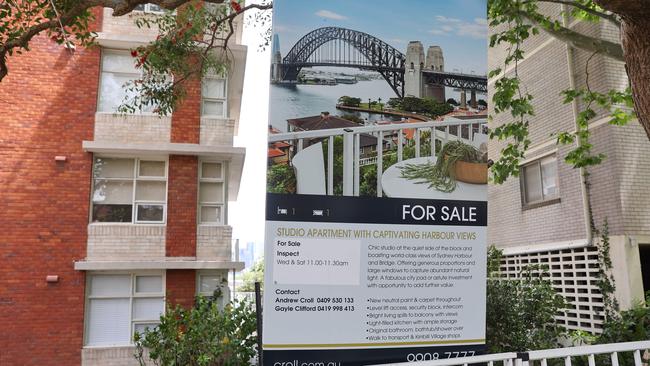Market now expects RBA to hike interest rates in August, the first since 2010 after Federal Reserve move
Morgan Stanley has pulled forward its forecast for the nation’s first rate-hike since 2010 to August from November with more to come.

Business
Don't miss out on the headlines from Business. Followed categories will be added to My News.
Morgan Stanley has pulled forward its forecast for the nation’s first rate-hike since 2010 from November to August, with further policy tightening to occur in September and November.
Citi also expects three rate hikes this year with the first to come in August.
Despite this, it said the economy was well-placed to absorb the initial increases and the risk of a sharp downturn in economic activity was low.
Morgan Stanley said in a note on Thursday that official rates would close the year at 0.75 per cent – above consensus estimates of 0.5 per cent but lower than the market’s pricing of about 1.4 per cent.
The Reserve Bank, it said, would also hike four times in 2023, leaving the cash rate at 1.75 per cent, although this would depend on the impact of the initial increases as well as the central bank’s expected move to shrink its balance sheet.
“While the case for near-term rate hikes can be made, the RBA has largely retained its ‘patient’ messaging,” Morgan Stanley analysts said.
“We think part of the reason for RBA caution is the real concern that the ‘supply-side’ dynamics of this inflation shock will win out and see both growth and inflation slow sharply – and so the RBA wants to see more evidence of demand-driven inflation pressures (wages) come through.
“But, we also think that part of the patience is about constructing a credible shift in narrative towards one that supports rate hikes, given only four months ago it was suggesting 2022 rate hikes were ‘highly unlikely’ “.
The announcement on Thursday of a lower-than-expected unemployment rate, down to 4 per cent from 4.2 per cent, added to expectations of an early rate increase.
The US Federal Reserve, as flagged, joined other central banks in lifting rates, taking the Fed funds rate from a range of 0-0.25 per cent to 0.25-0.5 per cent.
The Fed foreshadowed another six rate hikes this year and an imminent round of quantitative tightening.
RBA governor Philip Lowe said last Friday that many borrowers and lenders had little or no experience of a cycle where interest rates were rising.
With markets forecasting a hike as early as July, Dr Lowe acknowledged the cycle could begin this year.
“It’s not guaranteed but it’s plausible,” he told an Australian Banking Association summit.
However, there were also “plausible scenarios” where the record low 0.1 per cent cash rate could stay on hold until 2023 or 2024.
The key question was whether inflation was sustainably within the RBA’s 2-3 per cent target range, and that was currently not the case, although recent events meant it was now closer.
Morgan Stanley said the RBA remained “dovish” in its formal communication with the market, but its overall stance appeared to be shifting for three reasons.
First, global inflation was higher than expected, and the reaction from central banks was more hawkish than anticipated.
Second, while wage growth was lagging, broader labour costs were moving up.
Wage growth remained modest and had lagged the tightness in the labour market, the report said.
Importantly, though, broader labour cost measures had increased faster than wage growth, and the RBA had increasingly moved the focus towards them.
“With higher inflationary outcomes likely, the RBA can point to these broader labour cost measures as a signal that wage growth will eventually move higher – and be quite persistent there once it does,” the report said.
Morgan Stanley said the key determinant of how quickly the RBA could raise interest rates was the flow-on effect to the broader economy.
While the expansion of balance sheets, including assets and debt, had increased the likely impact of rate increases, this was largely expected to be offset by strong nominal income growth and the large build-up of cash and equity buffers.
The tightening cycle was also expected to be global, across developed markets.
Originally published as Market now expects RBA to hike interest rates in August, the first since 2010 after Federal Reserve move



